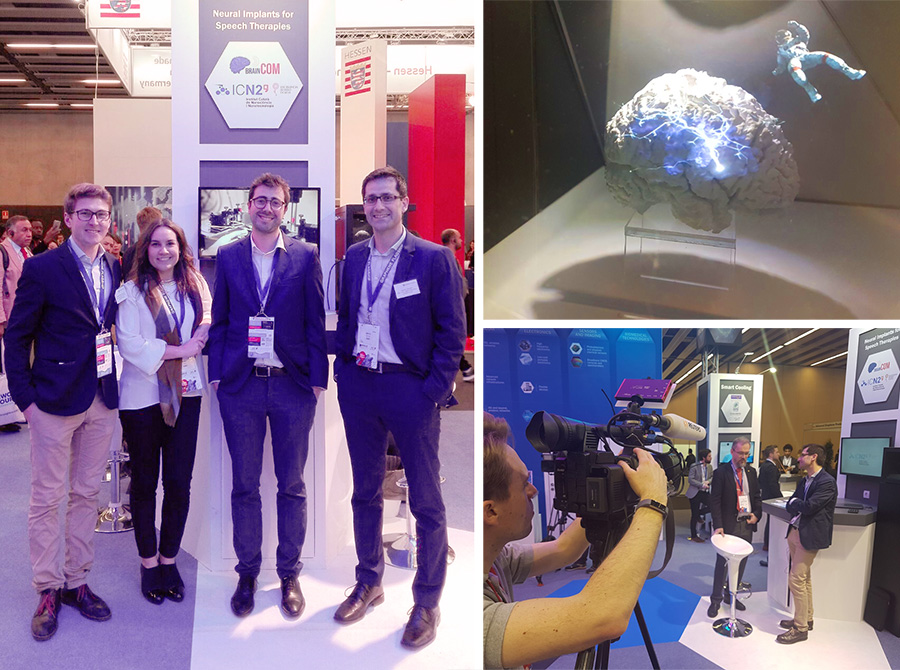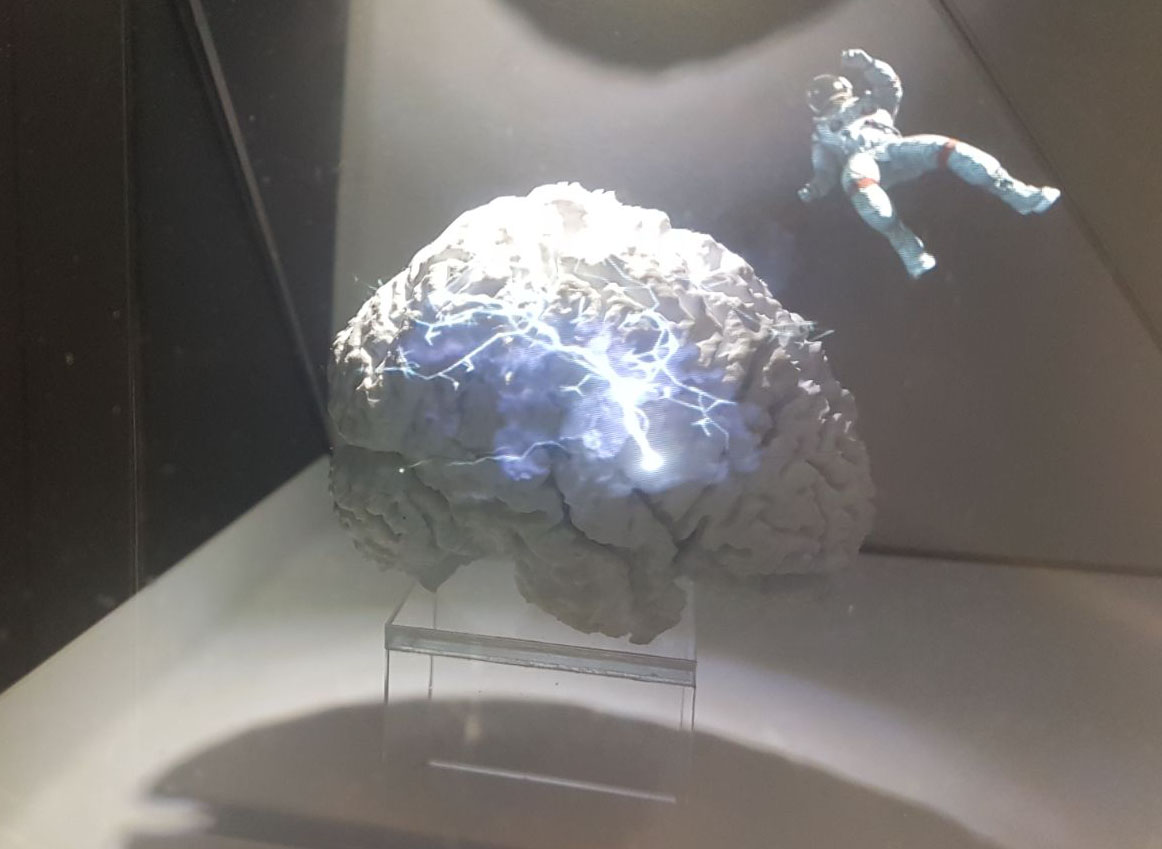As we have already reported, the GSMA Mobile World Congress returned to Barcelona last month and with it, the Graphene Pavilion. Back for the third year, the aim of this space is to bring graphene and related 2D materials to life for the diverse public that this congress attracts. With our track record in graphene-based breakthroughs, the ICN2 had to be there. Here is our review.

With over 107,000 visitors from 205 countries, the GSMA Mobile World Congress is the world’s largest gathering for the mobile industry and one of Barcelona’s biggest annual trade shows. It brings together companies large and small, government ministers and regulators, investors, innovators, practitioners and the international media.
For the third year running, the Graphene Flagship organised its Graphene Pavilion, with partners exhibiting some 20 plus prototypes and demonstrators. The aim of this space was to bring graphene and related 2D materials to life through interactive demos of a range of applications, from pressure-tracking shoes to invisible water filters to world-class solar cells. As a Flagship research partner and field leader in graphene technologies, the ICN2 was there to showcase its brain implant technologies, being developed under the H2020 BrainCom project to restore speech, and more generally as part of the ICN2 Severo Ochoa research programme "Nanodevices for Social Challenges".
Making ICN2 synonymous with graphene
With our track record in graphene-based breakthroughs, it was important that the ICN2 be there to consolidate the institute’s brand and position within this burgeoning market. Given the diverse public in attendance, it was also important that we attend under several different hats. And so, over the four days of the fair, the ICN2 was variously represented by BrainCom project coordinator and deputy leader of the Flagship Biomedical Devices work package, ICREA Prof. Jose A. Garrido; Head of Communications Àlex Argemí; Business Development Officer Nadia Pons; and PhD students with hands-on experience of the technology presented Andrea Bonaccini and Damià Viana.
Fielding questions from politicians, industry analysts, pharmaceutical scouts, tech hunters and medical practitioners, the team were put through their paces, rolling out adapted elevator pitches at every turn. The stand also attracted much attention from the international media, including this interview by Reuters (Andrea, from 00:34). Nadia also explained the technology as part of the Women4Tech tours organised on the first and third days, and can be spotted at the end of this video by the Graphene Flagship.
A holographic approach
Arguably the biggest challenge at an event as large as the MWC is standing out, enticing visitors into your area and keeping them there long enough to become as enthused about your work as you are. But this year we weren’t worried. Apart from the intrinsic relatability of the technology itself –speech and brain technologies present a heady mix of the everyday and the futuristic– we had a secret weapon: “The Pyramid”.

Picture the scene: amid a bustling pavilion, you catch sight of a model brain glowing with holographic synaptic activity, an astronaut floating weightless and, wait, are they words? Yes they are, our researcher explains, words that start out as electrical signals in the various brain regions involved in speech formation long before they are actually pronounced. And our supersensitive brain sensors, made from nanomaterials that mould perfectly to the brain’s bumps and creases, lying barely noticed on its surface, are able to detect this brain activity, record it and send it to an external device where it will be translated into recognisable words – or at least, this is the goal of the European H2020 BrainCom project that brings together research centres, universities and industrial partners from five countries to find solutions for patients with impaired communication abilities.
All in all, the event was a success for the ICN2. Visitors to the stand took the time to learn more about our brain sensors and future applications, affording good visibility for the ICN2, for the BrainCom project and for the technology underlying all of it. Ideas are already being cooked up for #MWC2019 – see you next year!

